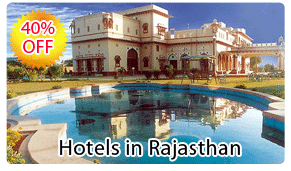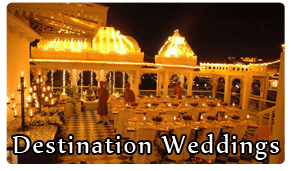
- perfectholidaytravel@hotmail.com
- +91 9811138106 / 9811 5939 89
Shekhawati City

The semidesert region of Shekhawati is a colourful fantasy having a fascinating uniquely of its own. The open air art gallery, as it is popularly called is famous for its plethora of painted havelis, all commendable pieces of the rich artistic traditional of this region. 'Shekhawati', meanings the land of Shekhs clan derives its name from Rao Shekha (1433 A.D.-1488 A.D. ) a section of the Kachhwaha family of Jaipur. Earlier a part of the former Jaipur state, it now comprises of the districts of Jhunjhunu and Sikar. Initially the region had a blank monochromatic look but with subsequent historical and social development it has blossomed into a colourful profusion of art and life for almost 2 centuries from 1750 AD to 1930 AD
Havelis: Shekhawati's magnificent havelis or mansions, built by rich merchants of the region, display a unique architectural style that evolved around the courtyards to ensure safety and privacy of the women folk and protection from the heat of the long and harsh summers.
The havelis, painted predominantly in the blue, maroon, yellows, green and indigo have beautiful wall paintings that adorn their walls. The earlier wall paintings (1830 AD -1900 AD)were largely based on the mythological themes, depicting local legends, animals, portraits, hunting and wrestling scenes and a glimpse of everyday life. The turn of the 19th century saw the appearance of new motifs, an outcome of the Raj's influence upon the Indian culture. Now cars, replaced elephants and traditional Indian miniatures mingled with naturalism of western paintings to produce interesting hybrid results. The mythological themes depicting gods, lithographs and photographs. Trains, cars, balloons, telephones gramophones English men in hunting attires and portraits of the haveli owners primely dressed were painted all over the walls-thus making the havelis interesting for both Indian and foreign travellers.
Places to Visit
Harsh Nath Temple (11 km):
An ancient 10th century temples situated on the Harsh Nath hills.
Jeen Mata Temple(29 km):
Believed to have been built a thousand years ago the temple is the venue of a colourful fair held twice in a year during `Navaratras'.
Rambagh:
Founded in the late 18th century by the Poddars. The Shani Temple of the Saturday God has delicately painted frescoes. Marvelous cenotaphs of the Poddars have exquisitely painted ceilings. The Ganga Temple and some beautiful havelis add interest to the town.
Jhunjhunu :
The capital of Shekhawati, it is of the largest towns of the district. The town was founded by the Kayamkhani nawabs in the mid 15th century AD and remained under their control until it was taken over by the Rajput ruler Sardul Singh in 1730 AD
The district town has some splendidly painted havelis. Easily accessible of these are those of Narssingh Das Tibriwal,Ishwar Das-Mohan DAs Modi and the Khaitans.
The most interesting monument is the Khatri Mahal (the Wind Palace) dating back to around 1760 AD with elegant lines. The Sri Bihariji Temple is noted for its lovely murals. Other places worth visiting include -Badalgarh,Jorawargarh,Mertani Baori,Kamruddin Shah ki Dargah, Birdi Chand ka Kaun,Ajit Sagar and a Jain temple.
Lachhmangarh Fort:
One of the most imposing forts in the Shekhawati region, Lachhmangarh commands a bird's eye view of the town modeled to resemble the city plan of Jaipur. Founded in the early 19th century by Raja Lachhman Singh of Sikar, the town has some lovely havelis.
Mandawa:
Founded in the 18th century,this medieval fort dominates the town with a painted arched gateway adorned with Lord Krishna and his cows. The Chokhani and Ladia havelis and the street with Saraf havelis are some of the splendid examples of this region's havelis. A shiva temple with a rock crystal lingam is also worth a visit. The fort is now converted into a heritage hotel.
Mukundgarh:
Known for it fine havelis, the fort is now a heritage hotel.
Dundlod:
Known for its fort, and a palace now running as a heritage hotel. Havelis of the Goenka family are also famous.
Nawalgarh:
Founded in the 18th century it has the finest of Shekhawati's frescoes. Its two old forts and palace hotel with garden and fountains along with a host of temples known for their architecture and frescoes add interest to the town. The prominent havelis are of the Poddars, Bhagats and Dangaichs.
Salasar Balaji:
A famous temple dedicated to Hanumanji is located here.
Ratangarh:
The massive fort, built in 1820 AD by the Raja of Bikaner-Ratan Singh, is situated on the Agra Bikaner highway. The market place is in the shape of a cross suggesting that the city was planned before construction. An array of stately havelis can be seen around the Clock Tower at the main crossing.
Access
Rail : Trains like Shekhavati Express, running between Delhi and Jaipur, Stops at Jhunjhunu, Nawalgarh and Sikr. Pink City Express is another train.
Road : The distance between Jhunjhunu and Delhi is about 250 km, and the road passes via Rewari and Chirawa. Another route passes via Rohtak and Bhiwani.
Jaipur Jhunjhunu : about 185 km
Bikaner Jhunjhunu : about 230 km










